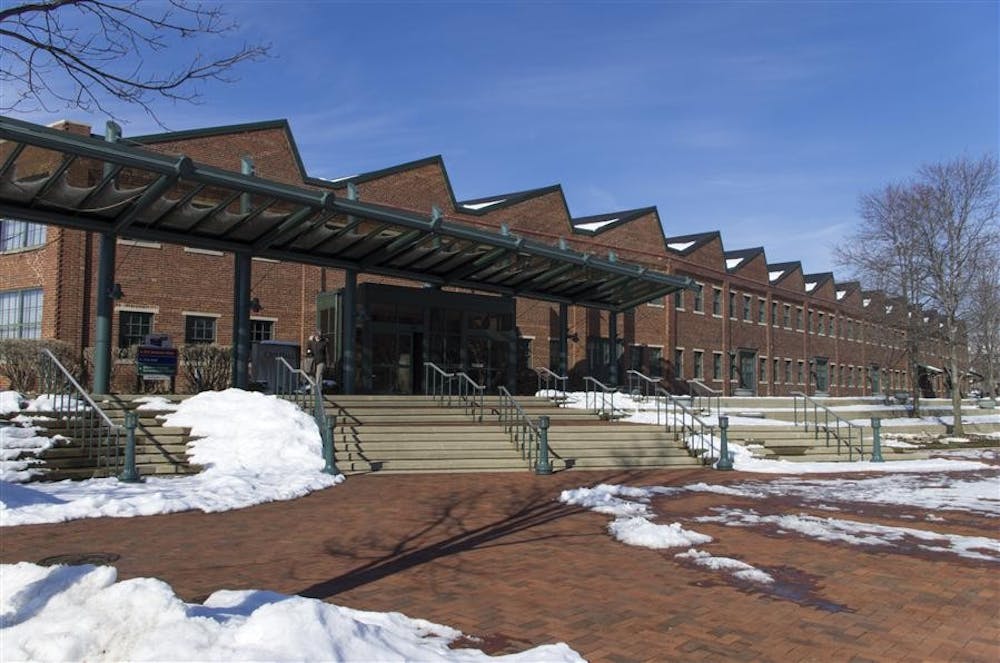Century-old City Hall became the first Bloomington government building to become Leadership in Energy and Environmental Design-certified.
LEED is an initiative by the U.S. Green Building Council, providing third-party verification of green buildings.
“It is probably the best nationally recognized green building certification,” said Jacqueline Bauer, sustainability coordinator for the Department of Economic and Sustainable Development.
To earn LEED certification, a building must satisfy all LEED prerequisites and earn a minimum of 40 points on a 110-point scale in the areas of energy and water use, sustainable management practices, site management, air quality and waste reduction. Buildings with 40 to 49 points become certified, while buildings with 50 to 59 points are silver, 60 to 79 points become gold and 80 points and above become platinum.
“This is a remarkable achievement for a former factory that is more than 100 years old,” Mayor Mark Kruzan said in a press release. “City Hall is a real asset for downtown Bloomington, and the fact that it’s such a great model of both sustainability and historic preservation just adds to its value.”
The process began with an energy audit and cost analysis, followed by renovations.
“We upgraded lighting, did upgrades to the motors that run the boilers and installed more water-efficient toilets,” Bauer said. “We also did a waste audit and began a recycling program.”
The certification was pursued as part of the Green Building Ordinance. The 2009 ordinance passed by the city council requires exploring LEED certification for 15 target buildings, Bauer said. Buildings on this list include the Utilities Service Center, Bloomington Police Headquarters, Bloomington Animal Shelter and Twin Lakes Recreation Center. The Recreation Center will be assessed in 2013.
The Green Building Ordinance mandates that buildings must be brought up to LEED-Silver standards, assuming savings will offset construction costs within 10 years. The GBO also requires that future city construction be built to LEED-Silver
standards.
Though the original goal was for City Hall to reach the silver level, Bauer said they were not able to hit the threshold necessary for silver, even with the energy
improvements.
“We have a number of additional improvements scheduled, so we hope to eventually hit that target,” Bauer said in an email. “We’ll need to recertify in five years, so we will shoot for it then.”
The City Hall certification was made possible in part by a federal grant through the American Recovery and Reinvestment Act of 2009.
“We were able to bypass a lot of the cost-benefit requirements because of a stimulus grant,” Bauer said.
Because City Hall was a renovated furniture factory and then a storage warehouse before becoming City Hall in 1994, Bauer said there was a lot of work to be done to update the old building.
“The certification process is quite a bit more complicated for existing buildings than new ones,” she said. “It’s a lot of kind of internal, tedious stuff, where as with new construction it’s really visible and photogenic.”
Despite the challenges, the preparation for certification improved the energy efficiency of the building.
“It took us about a year and a half total, from the time that we received the grant until we selected the company that would certify us,” said Barry Collins, facilities management coordinator for the Department of Public Works. “We were able to significantly reduce the energy bill here at City Hall.”
Since 2006, City Hall has reduced its energy use by 46 percent, Bauer said. She said she believes the LEED changes have contributed to this reduction.
“We expect that use will keep going down as we implement more improvements,” she said.
City Hall becomes LEED certified following upgrades

Get stories like this in your inbox
Subscribe



